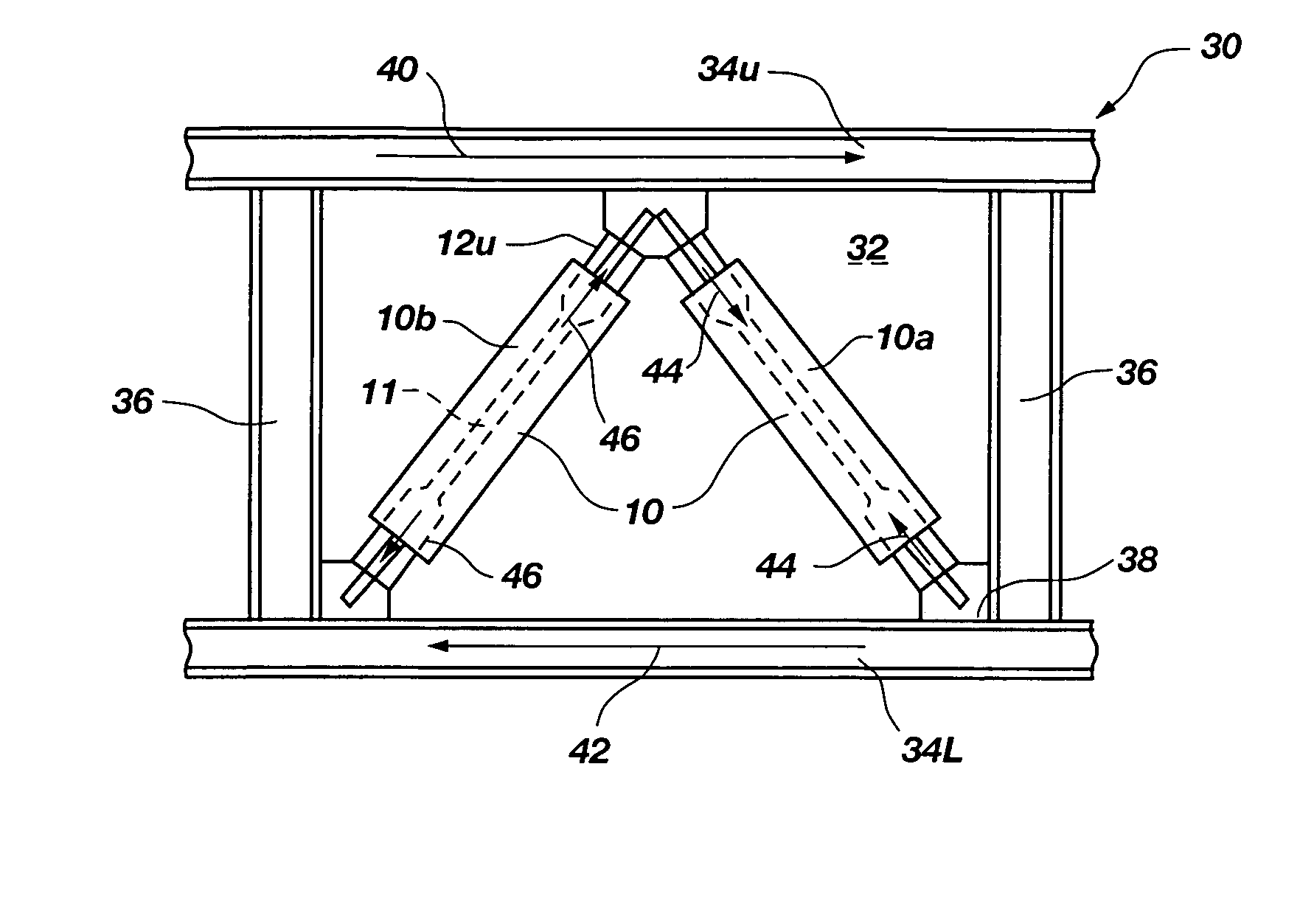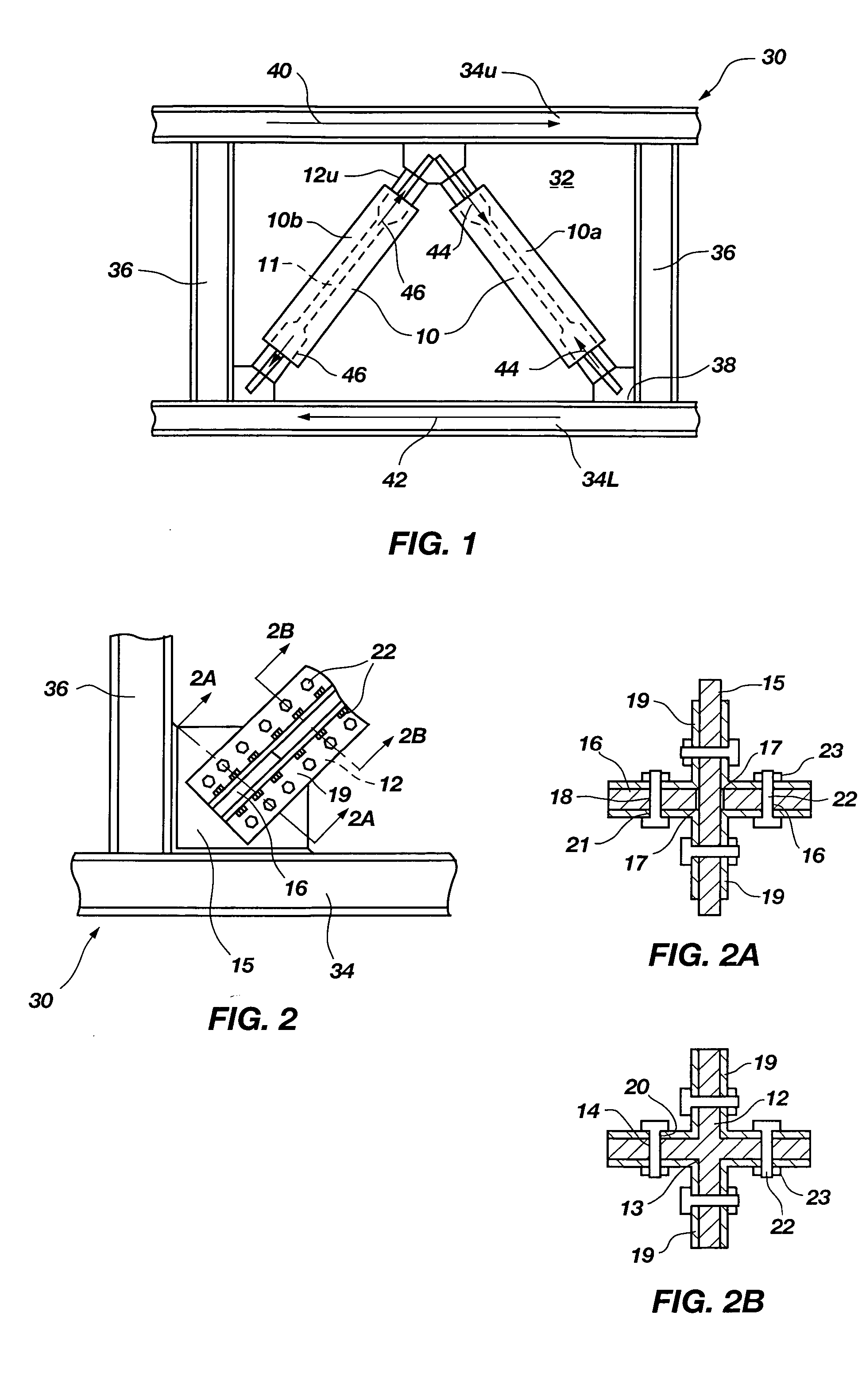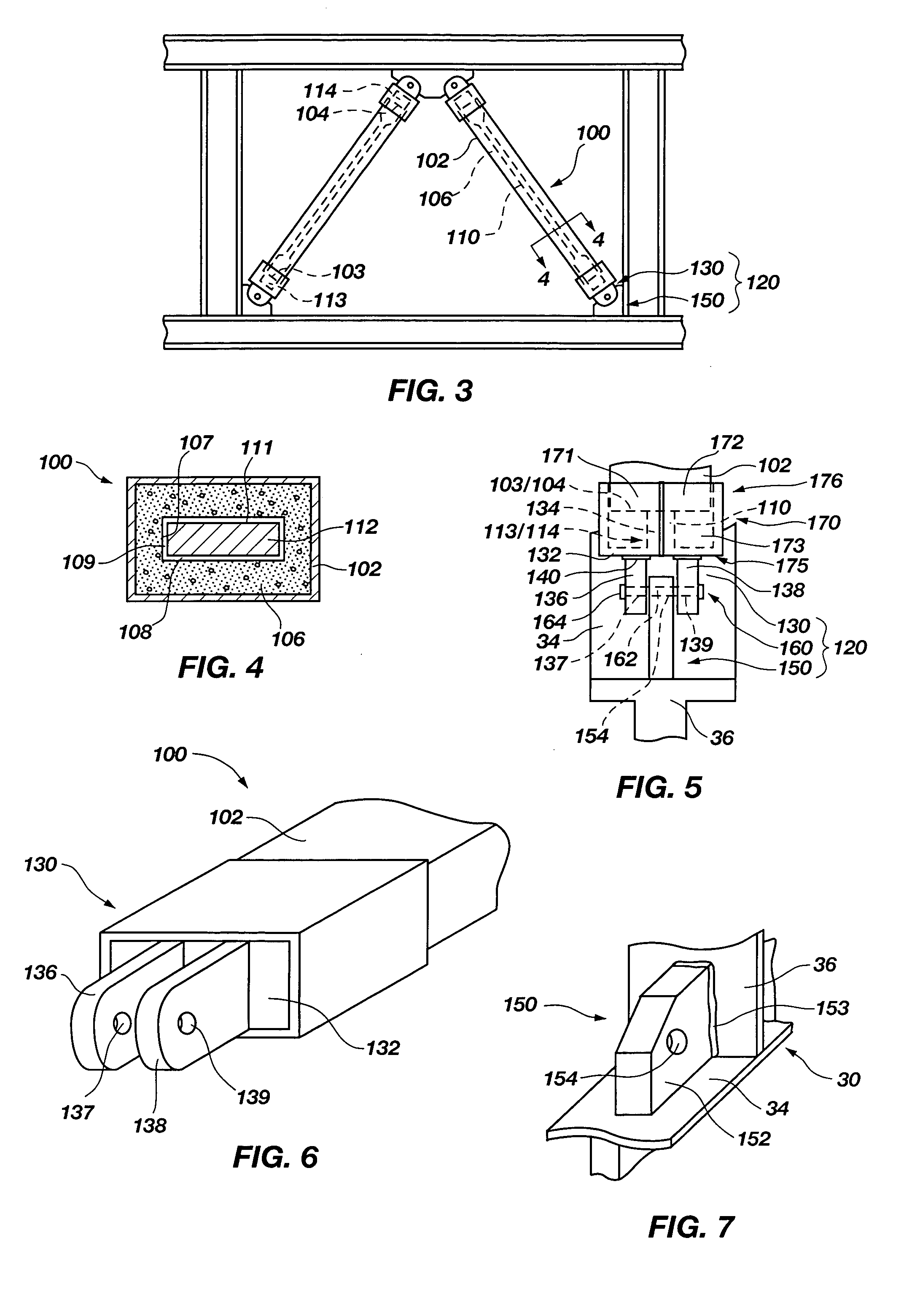Seismic braces including pin and collar connection apparatus
a technology for connecting apparatuses and seismic braces, applied in the direction of shock-proofing, couplings, rod connections, etc., can solve the problems of consuming a significant portion of the fixed distance between the connection locations of the brace, and achieve the effect of facilitating hinged movement, preventing weak axis buckling of the core, and being simple and fas
- Summary
- Abstract
- Description
- Claims
- Application Information
AI Technical Summary
Benefits of technology
Problems solved by technology
Method used
Image
Examples
Embodiment Construction
[0045] With reference to FIGS. 3 and 4, a seismic brace 100 that incorporates teachings of the present invention is depicted. In the illustrated example, seismic brace 100 is a single-core, compression and tension member which includes an elongate, substantially hollow exterior shell 102, a buckling-limiting member, which is also referred to herein as “containment 106,” within exterior shell 102, and an elongate yielding core 110 positioned substantially centrally within and extending completely along the length of containment 106. The depicted yielding core 110 has a rectangular, somewhat planar cross-section, taken transverse to the length thereof, and includes ends 113 and 114 which extend beyond corresponding ends 103, 104 of exterior shell 102. Yielding core110 is positioned within an aperture 108 that extends substantially through containment 106 and includes at least one surface 111 which is spaced apart from an interior surface 107 of containment 106 by way of a readily comp...
PUM
 Login to View More
Login to View More Abstract
Description
Claims
Application Information
 Login to View More
Login to View More - R&D
- Intellectual Property
- Life Sciences
- Materials
- Tech Scout
- Unparalleled Data Quality
- Higher Quality Content
- 60% Fewer Hallucinations
Browse by: Latest US Patents, China's latest patents, Technical Efficacy Thesaurus, Application Domain, Technology Topic, Popular Technical Reports.
© 2025 PatSnap. All rights reserved.Legal|Privacy policy|Modern Slavery Act Transparency Statement|Sitemap|About US| Contact US: help@patsnap.com



